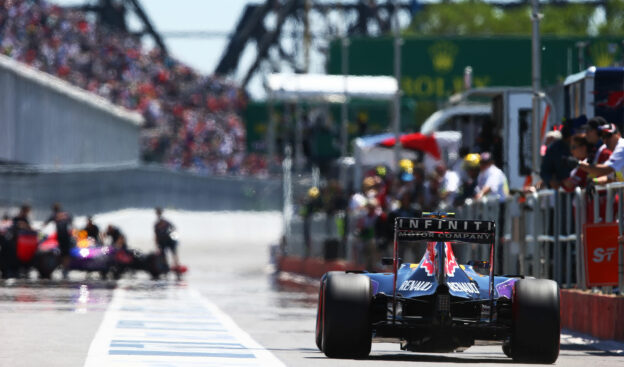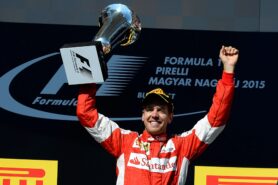Formula One betting is full of value if you know where to look

“Noisy cars resembling little more than moving advertising hoardings travelling round and around in circles whilst making lots of noise. Pulling up a deck-chair alongside the M25 motorway and watching the traffic go by is probably more fun!”
This may be the layman's take on Formula 1 but the truth is, the sport is one of the best betting mediums in the online betting village with over 150 markets on offer every race day.
Throw in three practice sessions plus a qualifying session and you have a veritable feast of betting opportunities (200+) for 19 weekends of the year.
Inherent tradition will lead most people straight to the race win market but, ironically, it is the last place you should be shopping around in this modern day and age.
The win market rarely offers any value with the Mercedes team currently dominating proceedings. Odds of 1/2 about Lewis Hamilton and 9/4 about his Mercedes team-mate, Nico Rosberg, at the start of each race weekend is commonplace and tells its own tale.
Before Mercedes rose to power it was Red Bull driver Sebastian Vettel who ruled the F1 world, winning the World Championship four consecutive times with consummate ease.
Thankfully companies like Skybet, who also offer a handy free bet here, have realised this uncompetitive fare does not appeal to viewers and punters and so a range of other markets have come to the rescue. Podium Finish, Top-6 Finish, Points Finish (top-10) are three that spring to mind.
Digging a little deeper
But this is only the tip of the iceberg. Joining the list is Winning Margin, Deployment of the Safety Car, Pole Setter, Fastest Lap and Number of Finishers. That’s before Match Bets and the real obscure stuff such as the First Car to Retire.
In short there are so many betting markets that mistakes in pricing them up have to crop up regularly and thankfully, they do.
The best tool in your F1 betting kit has to be statistics. Yes, regulations change every few years and the value of past form has to be questioned but a full autopsy of previous results will clearly show you defined trends.
The safety car in Monaco? It has been deployed in ten of the last 12 races at the principality. Singapore? There has been a Safety Car in all seven F1 races ever staged on their street circuit.
Similarly pole-setters going on to win the race in Barcelona? They have a 10 from 12 record. Total finishers in the Chinese Grand Prix? Only once in the last seven years has more than three cars failed to finish.
All of these are key form indicators and all are valuable info when trawling through some of the more obscure betting markets.
However, bookmakers often claim liquidity is short and therein placing anything more than fun bets with them can be troublesome.
Anyway, more conventional Top-Six and Top-Ten markets have served us well down the seasons and this appears to be a consequence of odds compilers taking recent results too literally and not putting enough inference on the type of circuit that recent form has come at.
Horses for courses
In Formula 1 no two F1 circuits are alike but cars, like racehorses, can have clear favourites. Some like/need galloping tracks to perform at their best, while others are best at tight, twist and undulating courses.
Fast tracks are known as ‘low-downforce’ tracks, slow ones with lots of cornering are ‘high down-force’ as these need an aerodynamic configuration which forces the car into the road and therein keep it on track while turning at speed.
Belgium and Italy are the two fastest circuits and therein they are of the ‘low-downforce’ ilk. At the other end of the scale Hungary, Singapore and Monaco are ‘high-downforce’.
When it comes to F1 betting you can pigeonhole tracks as set out below.
FAST
- Monza
- Suzuka
- Spa
HIGH-SPEED
- Nürburgring
- Bahrain
- Interlagos
- Shanghai
- Canada
MEDIUM
- Melbourne
- Sepang
- Barcelona
- Silverstone
- Austria
LOW-SPEED
- Monte Carlo
- Russia
- Hungaroring
- Singapore
Now, look for form trends. A car/driver combo that has done well in Monte Carlo and Hungary at the start of the season may have performed appallingly mid-season at the higher speed circuits.
Subsequently there may be massive odds-against about them taking even a Top-10 finish in later races during the autumn.
But then, back at a slow-speed ‘high downforce’ track such as Singapore …surprise surprise the bookmakers are caught with their pants down when a car/driver easily finishes inside the Top-10 accounting for cars which had been superior at the ‘fast tracks’ in previous weeks/months.
✅ Check out more posts with related topics:















LAST 3 F1 Fan COMMENTS